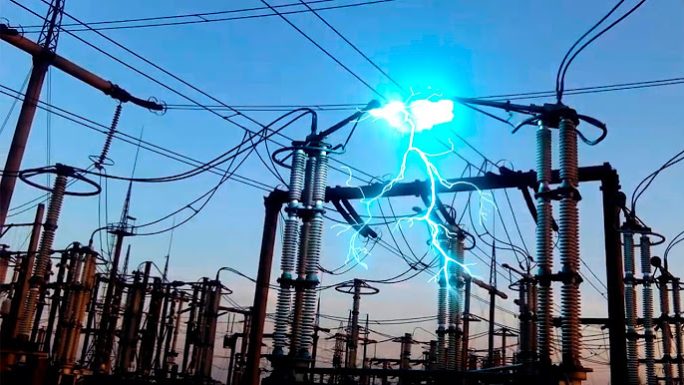Causes of Electrical System Failures and How to Avoid Them
Electrical system failures can have consequences leading to periods of inactivity, financial setbacks and potential safety hazards. Research conducted by the Electrical Safety Foundation International (ESFI) has revealed that electrical breakdowns rank high among the factors contributing to property harm, in settings. It is crucial to guarantee the dependability of systems, in both industrial settings. In this blog, we will explore the common causes of electrical system failures and provide actionable measures to prevent them

Common Causes of Electrical System Failures
Overloading:
Overloading occurs when electrical circuits are burdened with more current than they are designed to handle. This often happens when too many devices are connected to a single circuit, drawing excessive power.
Consequences: Overloading can cause overheating, leading to insulation damage, short circuits, or even fires.
Example: A typical example is a household with multiple high-wattage appliances plugged into a single outlet, causing the circuit breaker to trip.
Short Circuits:
A short circuit happens when a live wire comes into contact with a neutral or ground wire, creating a path of least resistance for the electrical current.
Consequences: Short circuits can cause immediate damage to devices, sparks, and even electrical fires.
Example: Damaged insulation or faulty wiring in an appliance can lead to short circuits, posing a significant hazard.
Poor Maintenance:
Neglecting regular maintenance can lead to the gradual deterioration of electrical systems. Components wear out over time, and without proper upkeep, minor issues can escalate into major failures.
Consequences: Poor maintenance can result in increased downtime, reduced efficiency, and higher repair costs.
Example: Failure to regularly inspect and clean electrical panels can lead to dust accumulation, overheating, and eventual system failure.
Environmental Factors:
External factors like moisture, dust, and temperature extremes can adversely affect electrical systems.
Consequences: These factors can corrode components, cause insulation breakdown, and lead to short circuits.
Example: High humidity environments can cause moisture to condense on electrical components, leading to rust and corrosion.
Aging Equipment:
Over time, electrical equipment can become obsolete, inefficient, and more prone to failure.
Consequences: Aging equipment is more likely to malfunction, leading to increased downtime and maintenance costs.
Example Scenarios: An old transformer in an industrial plant failing due to worn-out insulation and internal components.
Human Error:
Human errors, such as improper installation, incorrect operation, or inadequate maintenance, can lead to electrical system failures.
Consequences: Mistakes by personnel can result in equipment damage, safety hazards, and costly downtime.
Example Scenarios: An untrained technician improperly wiring a circuit, leading to a short circuit and equipment damage.
How to Avoid Electrical System Faults
Electrical system faults can cause costly downtime, equipment damage, and serious safety hazards. Here are practical strategies to help you avoid electrical system faults:
Regular Maintenance and Inspections
Scheduled Maintenance: Implement a routine maintenance schedule to inspect and service all electrical components regularly. This ensures early detection of potential issues, prolongs equipment lifespan, and improves system efficiency. Use a checklist, document activities, and address issues promptly.
Upgrading and Replacing Aging Equipment
Assess Equipment Condition: Regularly evaluate the condition of your electrical equipment to determine if it needs upgrading or replacing. Benefits include enhanced reliability, improved safety features, and increased energy efficiency. Replace worn-out equipment and upgrade to modern models.
Proper Load Management
Load Balancing: Ensure electrical loads are evenly distributed across circuits to prevent overloading. This reduces the risk of overheating and circuit breaker trips, enhancing system stability and efficiency. Use appropriate circuit breakers and fuses, and monitor load distribution.
Environmental Control
Protect Against Environmental Factors: Shield electrical systems from moisture, dust, and temperature extremes to prevent corrosion and insulation breakdown. This reduces the risk of corrosion and short circuits, prolonging component lifespan. Use protective enclosures and climate control solutions.
Training and Procedures
Staff Training: Ensure all personnel handling electrical systems are properly trained and establish clear procedures for installation, operation, and maintenance. This minimizes human error and enhances safety and system reliability. Provide comprehensive and updated training programs.
Use of Quality Components
Invest in High-Quality Parts: Using high-quality components and materials in electrical systems significantly reduces the risk of faults and failures. Benefits include increased durability and reliability of components and enhanced overall system performance. Ensure all components meet relevant certifications and standards.
By proactively addressing these common causes of electrical failures, you can enhance the safety, efficiency, and longevity of your electrical systems.
Ready to safeguard your electrical systems and avoid costly downtime? Get in touch with our experts to implement preventive measures and keep your operations running smoothly